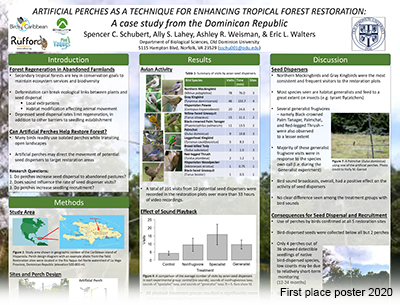College
College of Health Sciences
Program
Ph.D. Kinesiology and Rehabilitation - School of Rehabilitation Sciences
Publication Date
Spring 2020
DOI
10.25883/884p-n264
Abstract
This mixed methods experimental study used a survey to identify speech-language pathologists’ perceptions, including preparedness to provide augmentative-alternative communication (AAC) services to individuals with complex communication needs and learning preferences for post-professional training. Following certification standard changes in 2005 and 2014, the American Speech-Language-Hearing Association (ASHA) now requires instruction and clinical experiences during graduate studies across nine major content areas, including the use of AAC modalities. Prior to this change, the number of preservice programs reported to offer at least one AAC course increased from 62% (Ratcliff & Beukelman, 1995) to 72% (Ratcliff, Koul, & Lloyd, 2008). Since the certification standard changes, the trend continued with 86% of preservice programs reported to offer at least one dedicated AAC course (Johnson & Prebor, 2019). Despite improvements in preservice training coursework, the confidence and competence to provide AAC services to individuals with CCN remains a concern. Only 51% of graduate programs feel that at least half of students are prepared for AAC service delivery at the time of graduation (Johnson & Prebor, 2019). More than 70% of speech-language pathologists report inadequate preparation to delivery AAC services (Costigan & Light, 2010; Marvin, Montano, Fusco, & Gould, 2003) and 60% report having limited or poor comfort with AAC (Marvin et al., 2003). This study identified caseload, time, and knowledge as primary barriers for AAC service delivery. Speech-language pathologists reported learning preferences for on-the-spot training related to AAC evaluation and specific AAC interventions. Further, participants reported preferences for In-service, webinar, and conference training formats. Based on these results, trainings for post-professional speech-language pathologists can be designed to reflect both training preferences and current service delivery barriers.
Keywords
Speech-language pathologists (SLPs), Perceptions, Augmentative-alternative communication (AAC), Training preferences, Service delivery barriers
Disciplines
Education | Rehabilitation and Therapy | Speech Pathology and Audiology
Files
Download Full Text (1.2 MB)
Recommended Citation
Laverdure, Meredith and Johnson, Rachel K., "Reported Barriers to AAC Service Delivery & Post-Professional Learning Preferences Among Speech-Language Pathologists" (2020). College of Health Sciences Posters. 7.
https://digitalcommons.odu.edu/gradposters2020_healthsciences/7

Included in
Education Commons, Rehabilitation and Therapy Commons, Speech Pathology and Audiology Commons

